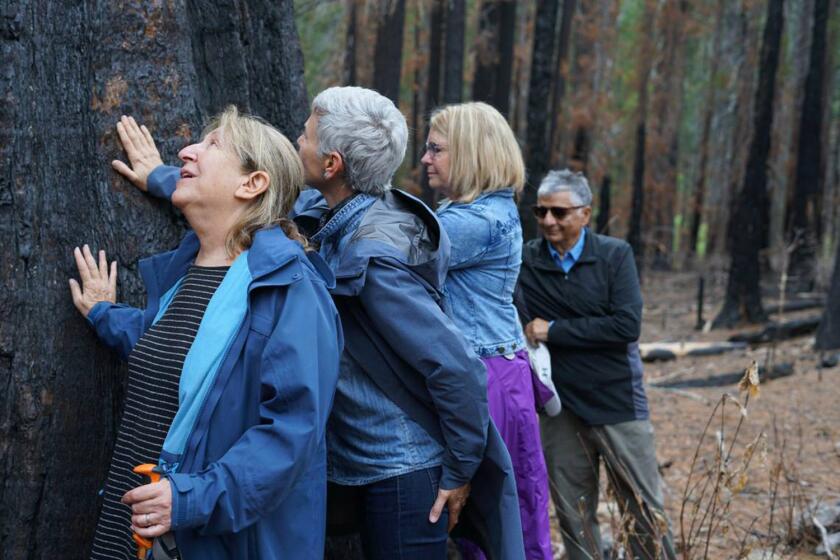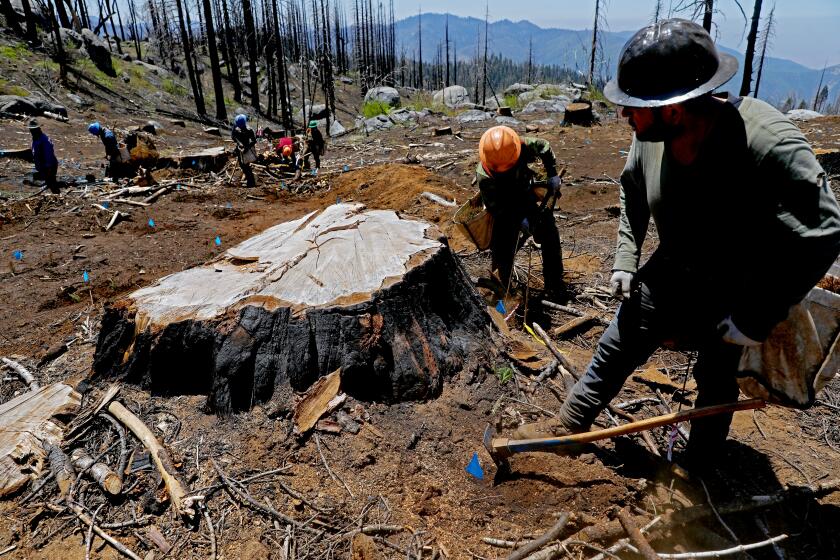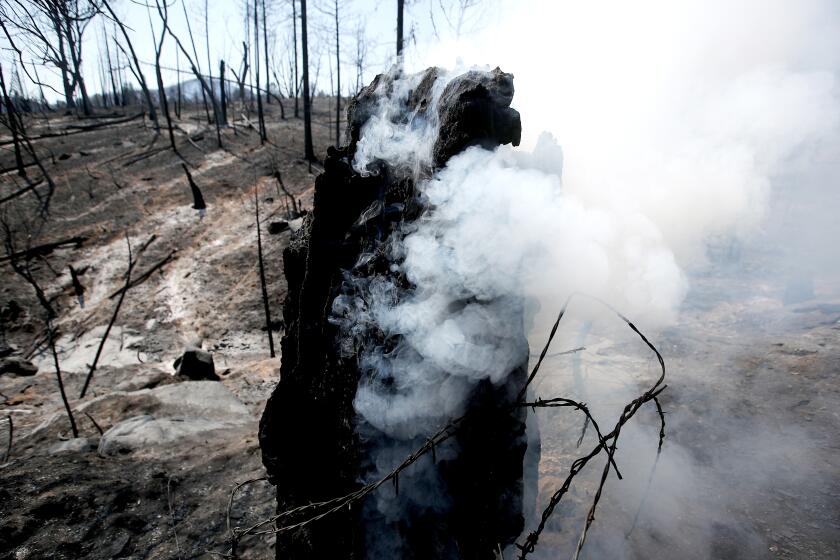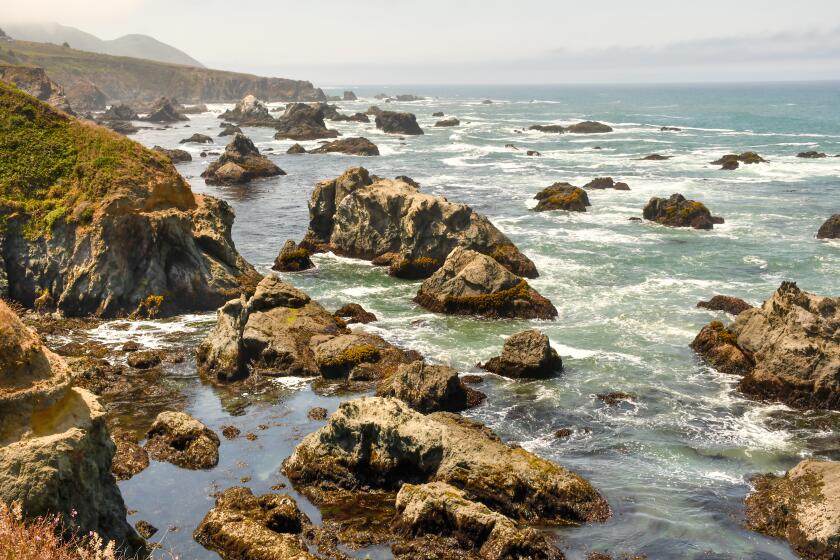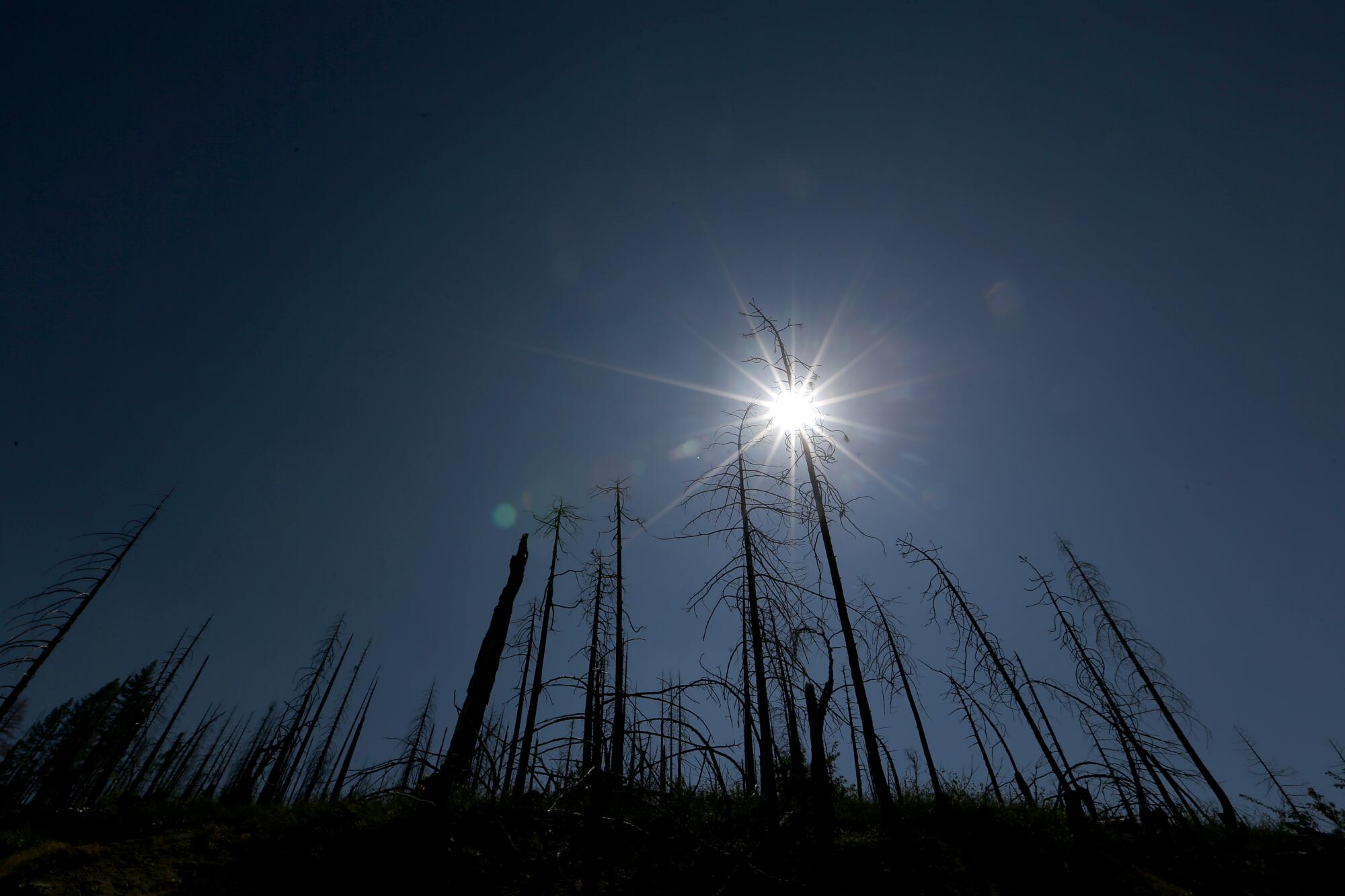
There’s something eerie about this forest in the southern Sierra Nevada. Tangles of bony branches obscure the ground. Dead trees stand gray and bristly. An aura of doom hangs over the green conifers that remain.
The expanse of Sierra National Forest near Shaver Lake is a relic of the climate before global warming. Scientists believe that the conifers won’t be able to survive the current conditions. Researchers at Stanford University found in a recent study that roughly one-fifth of all conifer forests in the Sierra are mismatched with the warmer climate and have become “zombie forests.”
“The name ‘zombie forest’ is kind of kitschy, but I’ve come to find that it is haunting,” said ecologist Avery Hill, who co-wrote the study while pursuing a doctorate at Stanford.
Hill combed his way through a thicket one afternoon and paused at a clearing overlooking a valley, its pine-studded slopes dotted with boulders ringed by patches of shrubby chaparral.
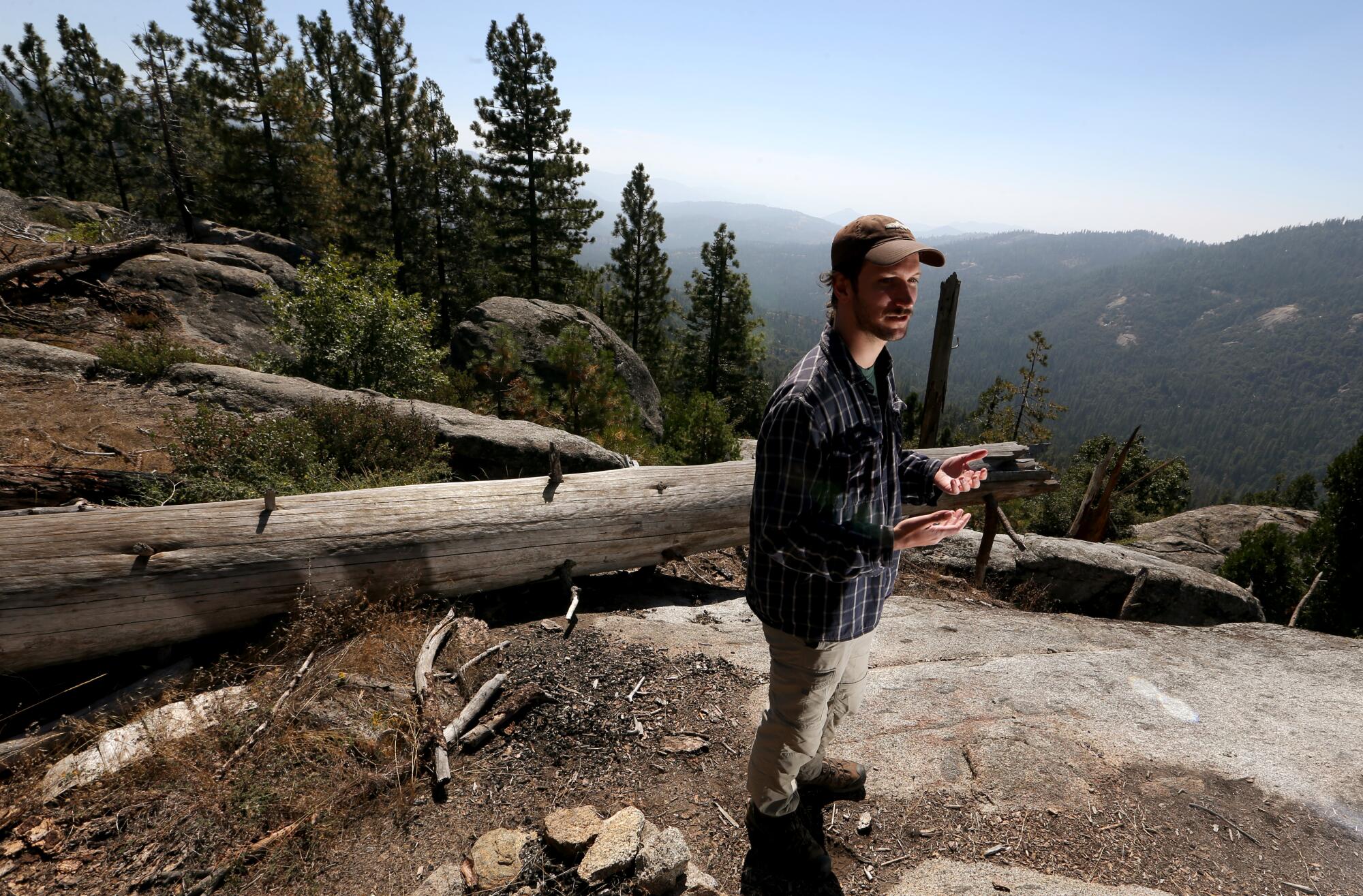
“That’s what we think will spread out and eventually cover this whole area,” he said.
The findings indicate that these lower-elevation Sierra conifer forests, which include ponderosa pine, sugar pine and Douglas fir, are no longer able to successfully reproduce. Conditions have become too warm and dry to support conifer saplings, whose shallow roots require plenty of water if they are to survive into adulthood, Hill said. Giant sequoias also grow in lower-elevation areas of the Sierra Nevada, but the researchers didn’t analyze the risks specific to those trees.
When these forests burn in high-severity wildfires — or are wiped out by drought, disease or pests — they will likely be replaced by other types of trees and brush, the scientists said. That could dramatically slash how much carbon the region can store; provide a habitat for invasive species; and displace plants and animals that call the forests home.
Knowing exactly where such changes might take place can help land managers prioritize where to resist the changes and where to accept or even accelerate them.
Aggressive and impactful reporting on climate change, the environment, health and science.
“It provides almost an experimental space to address some really difficult questions about how we manage ecological transitions,” said Hill, who now works at the California Academy of Sciences.
Hill started his doctoral program knowing he wanted to study how human activity affects forests. Then the Nuns fire burned through the redwood forests of Napa, threatening his family home and destroying a shed. To Hill, it was a clear instance of the confluence of wildfire and climate change, leading him to focus on those topics.
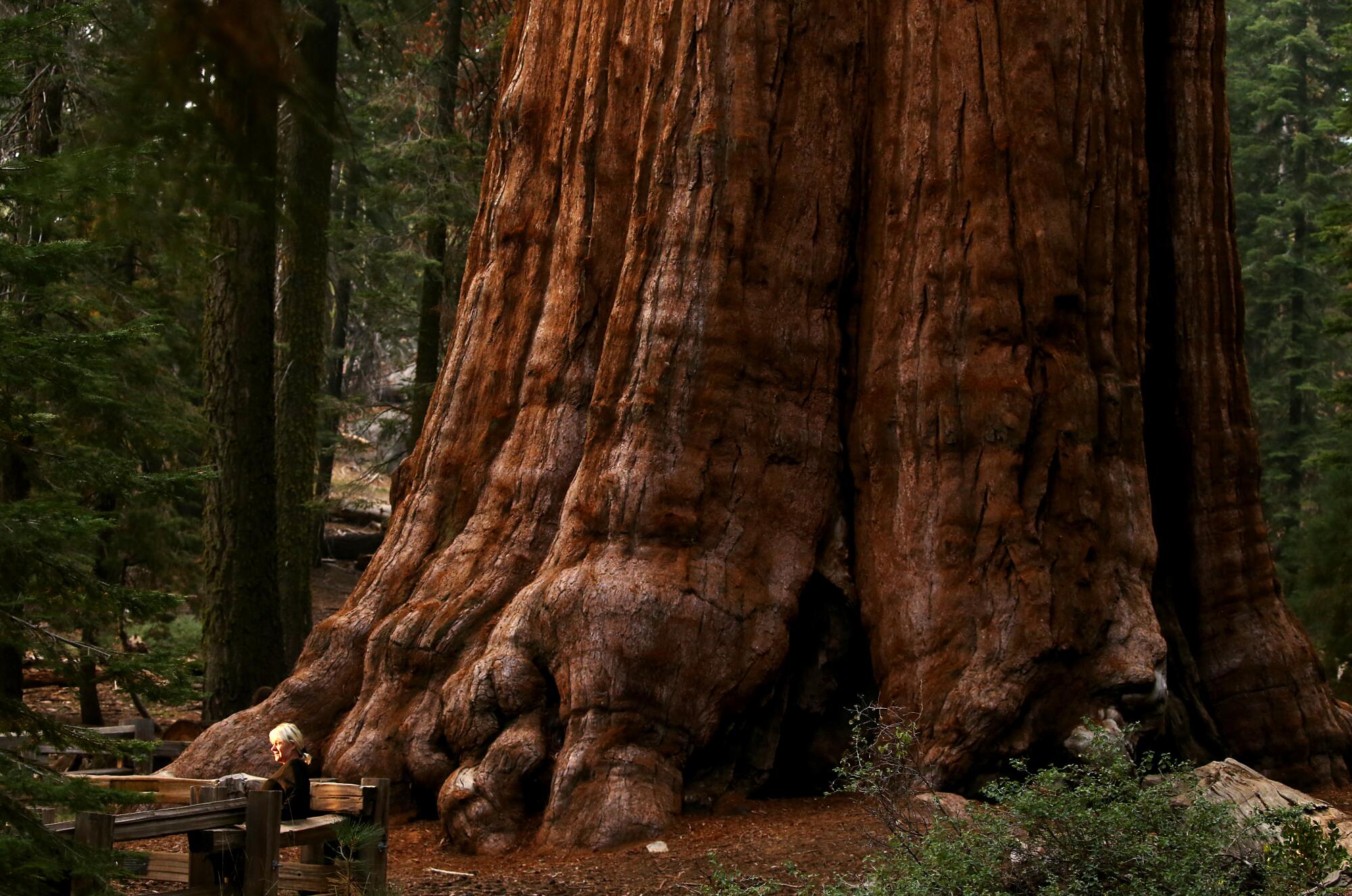
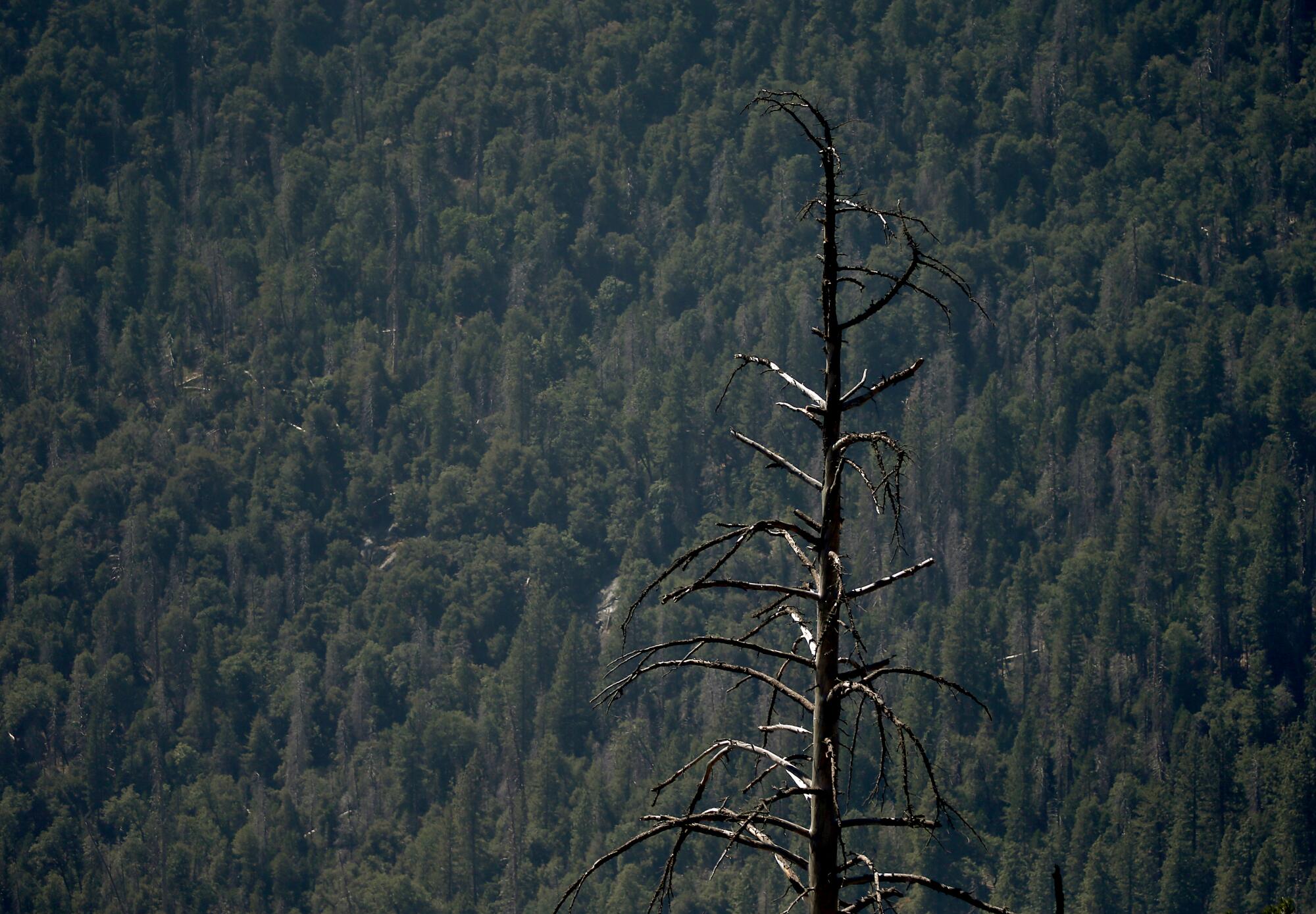
Zombie forests can persist for a long time without a disturbance to shake them up, Hill said, but research showed that many of the forests are headed for inevitable transitions with the 2.2 degrees of warming that has already occurred in the Sierra.
These rapidly changing landscapes could have major implications for how California manages wildfire.
Different types of forest burn in different ways, and knowing what will grow where could help authorities plan for fires, Hill said. For instance, chaparral historically supports catastrophic fire on average every 40 to 50 years, versus every 150 to 200 years for conifer forests, he said.
“So maybe around communities, you’d prefer to have a well-managed conifer forest,” he said.
Related coverage
A pair of giant sequoias named the Orphans are expected to recover from damage sustained in a controlled burn in Calaveras Big Trees State Park.
To determine which areas of forest are mismatched with the warmer climate, the scientists examined detailed vegetation data from a U.S. Forest Service survey done in the 1930s. From that, they created a computer model to analyze habitat suitability, and found that while the average elevation of conifer forests has shifted upslope about 110 feet, the temperatures most suitable for the trees have retreated farther up the mountains, about 600 feet on average.
They crafted a map of the Sierra splotched with pink — which shows where the forests are outside of the climate where they thrive — and red — where the mismatch is severe.
While much of modern-day ecology is focused on understanding transitions by examining those that have already occurred, this map shows where changes are likely to take place, Hill said.
“So we can start monitoring them and observing these transitions before they even start, and even start thinking about proactive management in these areas,” he said.
He described the study as a jumping-off point for more research, including whether wildfires burn differently in zombie forests and how that knowledge might be integrated into fire behavior modeling.
Sarah Campe, regional scientist with the Sierra Nevada Conservancy, said she found the research thought-provoking. It added to an ongoing conversation about what the forests of the future will look like, she said. Still, she tends to view studies about landscapes’ response to climate change with some skepticism.
“These landscapes are incredibly complex,” she said. “I just don’t think our models are there yet to actually be able to understand exactly what will happen.”
Crews recently planted 30,000 giant sequoia seedlings in the western Sierra, as part of an ongoing effort to restore groves devastated by wildfire.
Climate is just one driver of change affecting these ecosystems, Campe pointed out. More than a century ago, colonizers outlawed cultural burns by Indigenous groups and adopted aggressive fire-suppression policies, and later managed swaths of the region for timber. These practices deprived the Sierra’s forests of the regular low-intensity fires to which they’d adapted, and resulted in the removal of the largest, most fire-resistant conifers. Many of these areas are now overcrowded with younger trees that burn more easily.
“That has altered the structure and composition of these forests and made them vulnerable to wildfires, to drought and to warmer temperatures,” she said. “And certainly, climate is a huge and important driver in all of this, but that doesn’t mean that there aren’t levers that we can be pulling that aren’t directly associated with carbon reduction to help protect these forests or restore these ecosystems.”
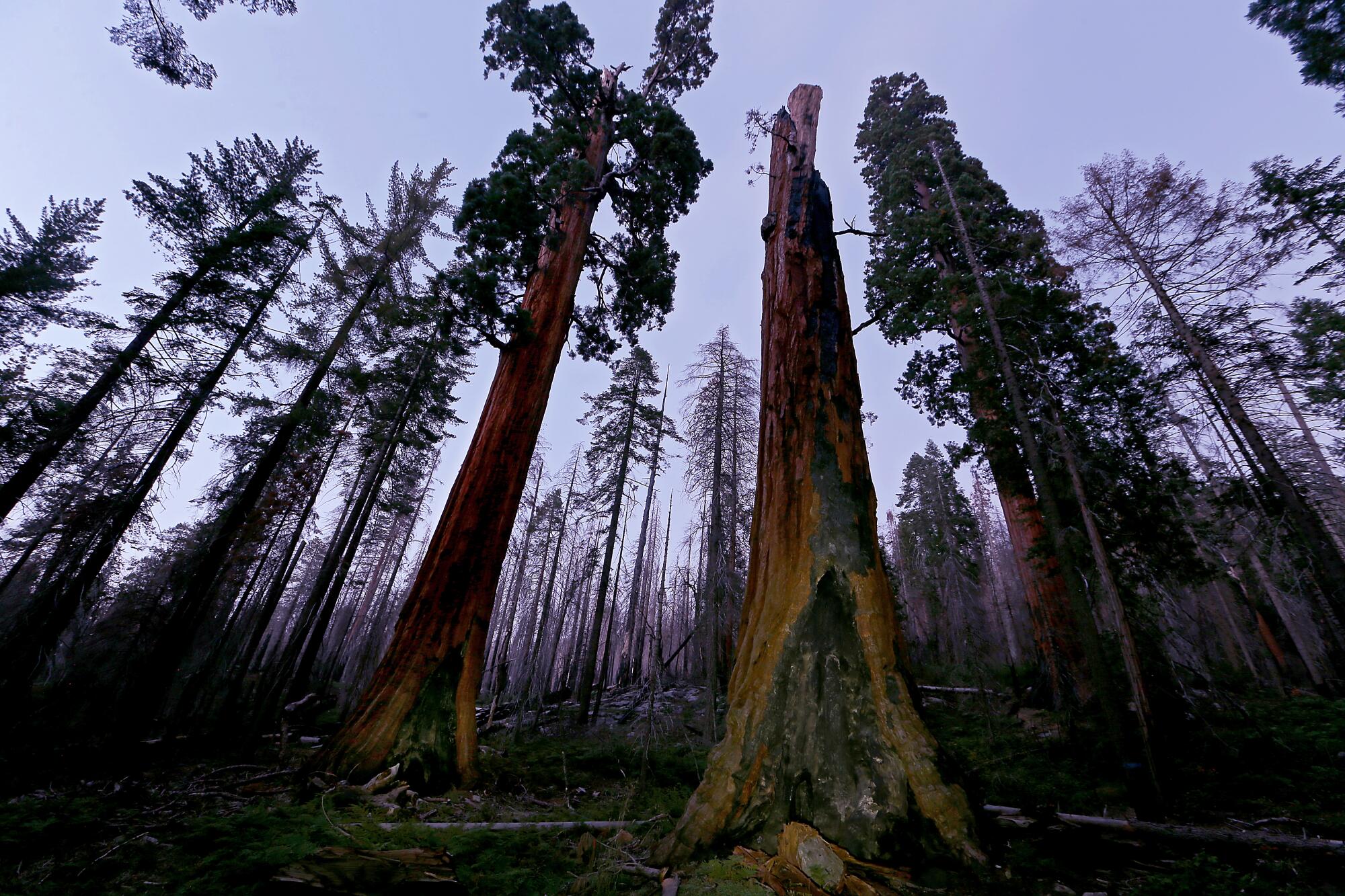
Hill agreed, but said the researchers chose to focus primarily on climate because it’s the foundational condition that determines whether a tree can grow in a particular place.

Subscribers get exclusive access to this story
We’re offering L.A. Times subscribers special access to our best journalism. Thank you for your support.
Explore more Subscriber Exclusive content.
“There are management decisions you can make to kind of squeeze out every last opportunity these trees have to survive by thinning these forests out or introducing prescribed burns or even seeding different species after logging,” he said. “But if the climate says no, the forest won’t grow.”
His team examined different scenarios of global warming and concluded that if humanity allows climate change to occur at rapid rates, nearly all of the Sierra Nevada could become unsuitable for conifer forests by the end of the century. They found that even with improved efforts to cut planet-heating emissions from fossil fuels and other sources of greenhouse gases, the Sierra zombie forests could still double in size this century. But they said efforts to rapidly address climate change could make a big difference.
“It’s a really stark reminder of how much climate change has already occurred, and how important it is to make sure that the amount that occurs in the future is as little as possible,” said Chris Field, the study’s senior author and director of the Stanford Woods Institute for the Environment. “With aggressive efforts to control climate change, then we lose more of the Sierra, but not all of it.”
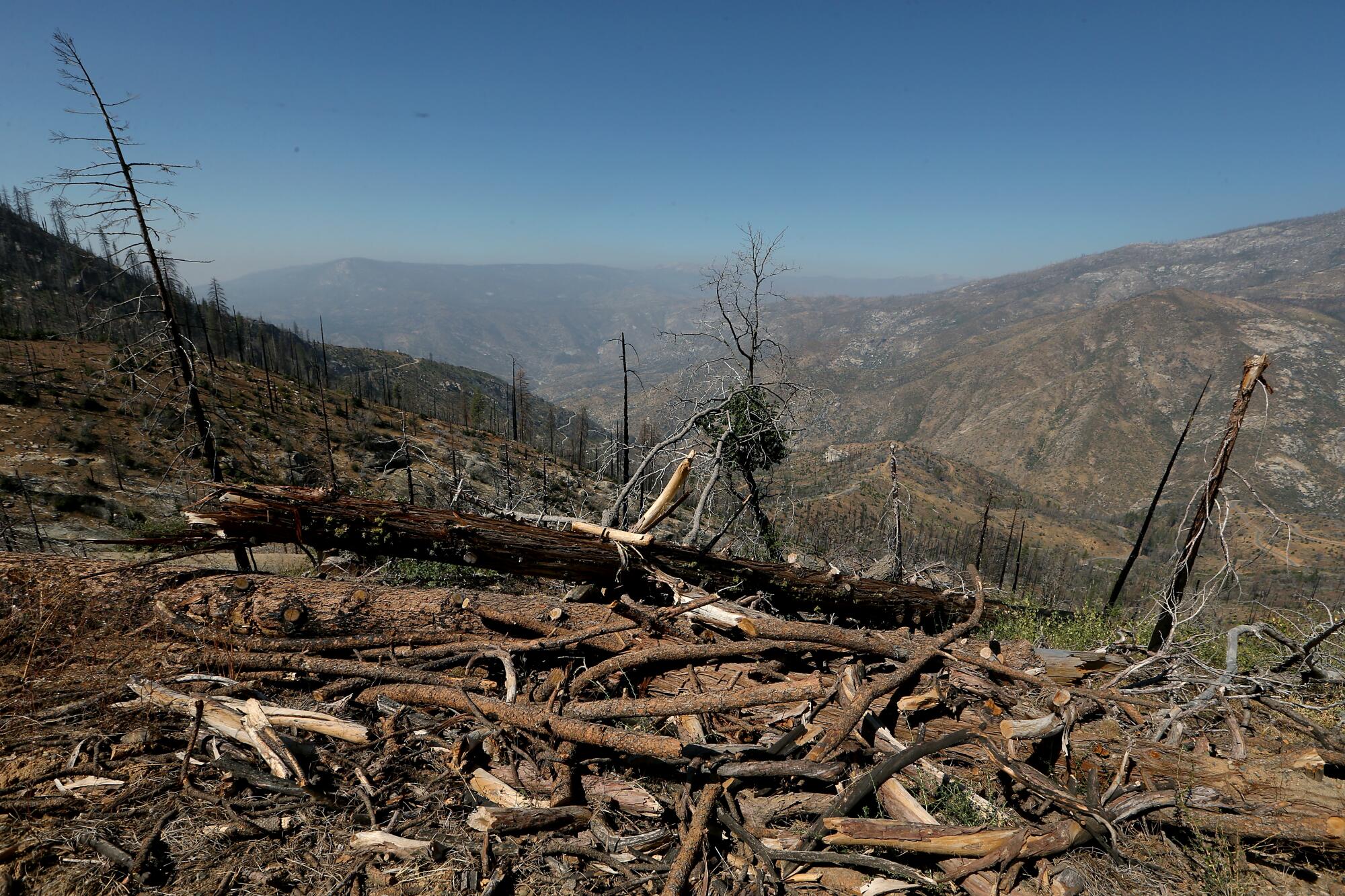
Another nearby patch of land offers a window into what happens to a zombie forest after a disturbance. Three years ago, the Creek fire razed these slopes, its explosive intensity — which scientists likened to an incendiary bombing attack — stoked by millions of dead trees that had been weakened by drought and ravaged by bark beetles.
Now, blackened spires jut up from the ground as far as the eye can see. Oaks have resprouted, but no conifer saplings are yet evident.
“If our models are right, this is more likely than anywhere else to come back as something that’s not conifer forest,” Hill said as he peered out over the stunning devastation.
There are measures land managers could take to plant and nurture conifer seedlings, Hill said, but he noted it would come down to resources, asking, “Is it that important for these lower areas to come back as conifer forest?”

Ron Goode, chairman of the North Fork Mono Tribe, said that since the Creek fire, the Mono winds that typically blew 60 to 70 mph had at times increased to 110 mph. And the snow and rains that fell last winter unleashed major flooding.
“There’s nothing to hold the snow, nothing to hold the water back,” he said. “So it’s out there on bare rock, bare land. It’s going to melt faster.”
Subscriber Exclusive Alert
If you're an L.A. Times subscriber, you can sign up to get alerts about early or entirely exclusive content.
You may occasionally receive promotional content from the Los Angeles Times.
Still, Goode said, reseeding isn’t necessary if people steward the land. Although the soil might be scorched several inches deep, there are seed pods underneath the burned portion, he said. Indigenous people used to poke holes in the earth to allow these seeds to sprout, but forest policies now forbid this, he said.
He said that while oaks and chaparral tend to resprout relatively quickly, conifers take three to five years to begin regrowing. So there often needs to be a burn a couple of years after a wildfire to cull the shrubs and give conifers the opportunity to come back.
“I always say to my people when I’m working out there that what we do for Mother Nature is we give her a pedicure, a manicure; we even try to clean her up a little bit,” he said. “But she’s going to the ball in the springtime; she’s going to put on her own dress. When you give her the opportunity, she knows how to dress herself up.”
“That’s the whole difference between what the Native American did with the land and what the European American does to the land — is we put back. We give back,” he added. “They don’t.”
Members of the Southern Sierra Miwuk Nation became the latest Indigenous tribe to watch homes burn despite knowing it could have been avoided.
Other interventions could include thinning out the trees so there’s enough water to go around, and trying to keep catastrophic fire risk low by culling vegetation that could carry flames from the forest floor up into the canopy, Field said.
“These Sierra conifers can live for hundreds and hundreds of years,” he said. “And one aspiration of this kind of intervention would be to create a situation where even though the forests are zombies — are not reproducing — we might be able to keep them in place and keep their ecosystem services going for many decades or even centuries.”
Land managers may in some cases decide that the best approach is to harvest the existing trees and facilitate the recovery of shrubs or oak trees.
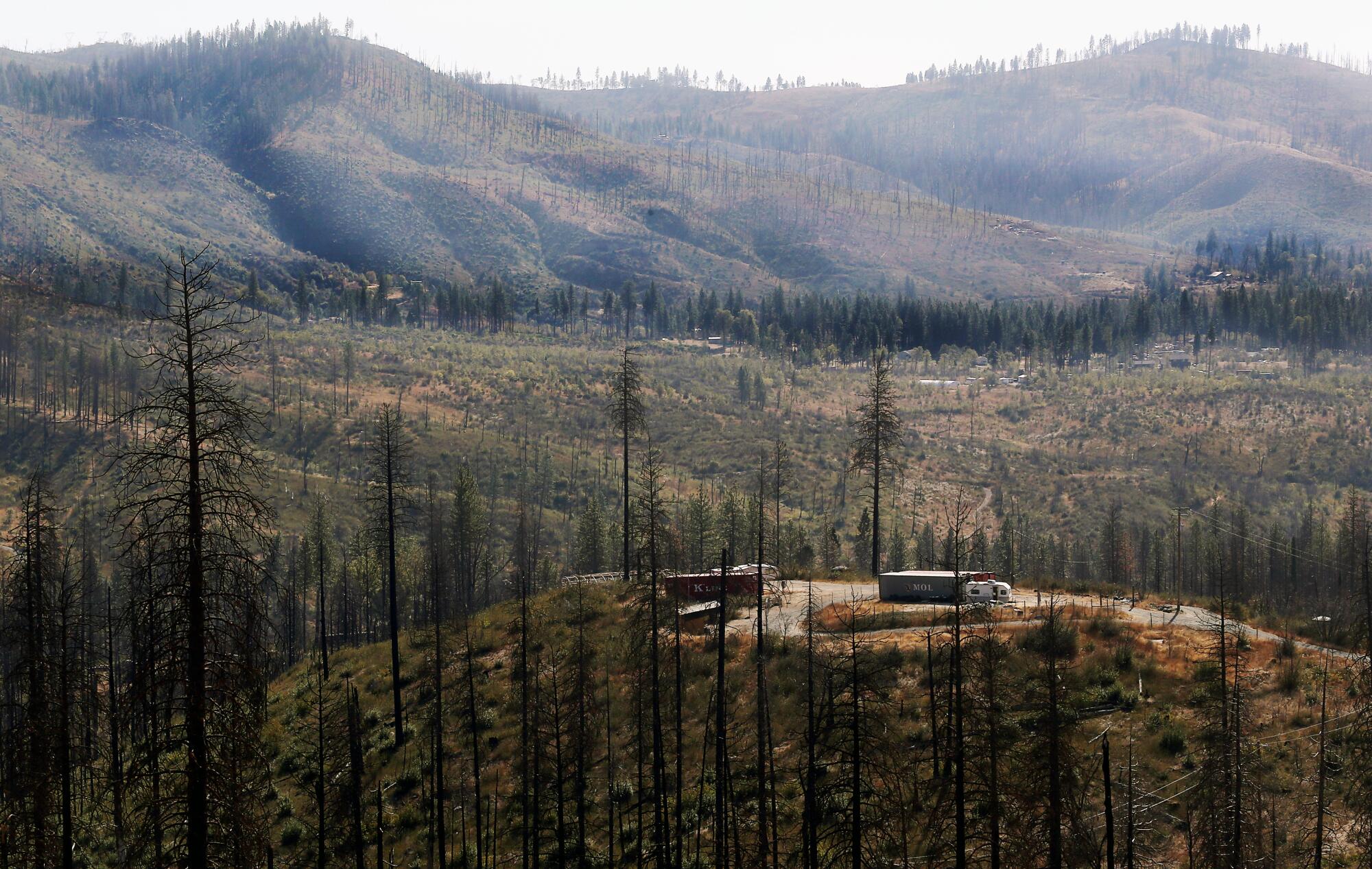
For example, within the footprint of the 2018 Camp fire, there was an area of near-total forest loss that is unlikely to support dense conifer stands in the future, said Campe of the Sierra Nevada Conservancy. Several groups, including the Butte County Resource Conservation District, U.S. Forest Service, Konkow Valley Band of Maidu Indians and the nonprofit American Forests, are facilitating a transition toward an open, oak-dominated woodland.
In other places, including recreation areas, tribal cultural sites and habitats that support iconic species like giant sequoias, it may be worth putting more resources into preserving or restoring the ecosystem, she said.
Still, Campe said, the Sierra’s land managers — which include government agencies, private landowners, resource conservation districts and tribes — are able to touch just a fraction of the 25-million-acre region due to funding and personnel constraints.
“If Mother Nature is hitting a giant ‘reset’ button, there’s going to be huge parts of the landscapes that we won’t be able to impact. That’s where acceptance comes into play,” she said. “This will not be the same Sierra our grandparents knew. But that doesn’t mean it won’t be a place that we continue to value and enjoy.”
Toward a more sustainable California
Get Boiling Point, our newsletter exploring climate change, energy and the environment, and become part of the conversation — and the solution.
You may occasionally receive promotional content from the Los Angeles Times.
